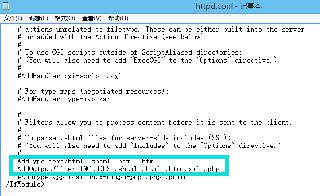淺談python輸出列表元素的所有排列形式
例如:
[‘a(chǎn)’, ‘b’, ‘c’] 輸出 [‘a(chǎn)’, ‘b’, ‘c’] [‘a(chǎn)’, ‘c’, ‘b’] [‘b’, ‘a(chǎn)’, ‘c’] [‘b’, ‘c’, ‘a(chǎn)’] [‘c’, ‘a(chǎn)’, ‘b’] [‘c’, ‘b’, ‘a(chǎn)’]
方法一:利用遞歸的方式實(shí)現(xiàn)
def permutation(li): len_list = len(li) if len_list == 1: return li result = [] for i in range(len_list): res_list = li[:i] + li[i+1:] s = li[i] per_result = permutation(res_list) if len(per_result) == 1: result.append(li[i:i + 1] + per_result) else: result += [[s] + j for j in per_result] return result
方法二:利用python自帶的模塊
import itertoolsdef permutation(li): print(list(itertools.permutations(li)))
補(bǔ)充拓展:python實(shí)現(xiàn)四個(gè)數(shù)字的全排列
首先我們使用常規(guī)做法,循環(huán)交換完成。
lst = [1, 3, 5, 8]for i in range(0, len(lst)): lst[i], lst[0] = lst[0], lst[i] for j in range(1, len(lst)): lst[j], lst[1] = lst[1], lst[j] for h in range(2, len(lst)): print(lst) lst[j], lst[1] = lst[1], lst[j] lst[i], lst[0] = lst[0], lst[i]
如果列表較長(zhǎng),元素較多,以上常規(guī)方法實(shí)現(xiàn)起來就比較吃力了,以下我們采用遞歸方式實(shí)現(xiàn)。
def permutations(position): if position == len(lst) - 1: print(lst) else: for index in range(position, len(lst)): lst[index], lst[position] = lst[position], lst[index] permutations(position+1) lst[index], lst[position] = lst[position], lst[index]permutations(0)
以上這篇淺談python輸出列表元素的所有排列形式就是小編分享給大家的全部?jī)?nèi)容了,希望能給大家一個(gè)參考,也希望大家多多支持好吧啦網(wǎng)。
相關(guān)文章:
1. ASP動(dòng)態(tài)網(wǎng)頁制作技術(shù)經(jīng)驗(yàn)分享2. .Net Core和RabbitMQ限制循環(huán)消費(fèi)的方法3. JSP之表單提交get和post的區(qū)別詳解及實(shí)例4. Xml簡(jiǎn)介_動(dòng)力節(jié)點(diǎn)Java學(xué)院整理5. 詳解瀏覽器的緩存機(jī)制6. jsp文件下載功能實(shí)現(xiàn)代碼7. 如何在jsp界面中插入圖片8. phpstudy apache開啟ssi使用詳解9. jsp實(shí)現(xiàn)登錄驗(yàn)證的過濾器10. vue3+ts+elementPLus實(shí)現(xiàn)v-preview指令

 網(wǎng)公網(wǎng)安備
網(wǎng)公網(wǎng)安備